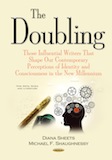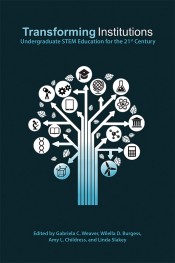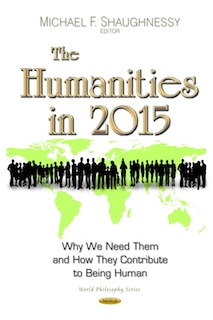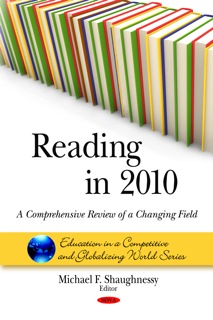Copyright © 2010 by Diana E. Sheets
The November 2010 Midterm elections are nothing less than a repudiation of the progressive policies of the Obama administration. The outcome resulted in the biggest defeat of a first-term president since 1922 when Warren Harding, a Republican, was president (James Ceaser, “The 2010 Verdict,” Real Clear Politics, November 10, 2010, http://www.realclearpolitics.com/articles/2010/11/10/the_2010_verdict_107908.htm). As of the end of November, the Republicans secured a sixty-three seat increase in the House. With 242 seats (http://www.realclearpolitics.com/elections/2010/house_final_results.html) they are well above the 218 needed for a majority. The Democratic defeat represents the greatest number of House seats lost in a midterm election since 1938 (Ceaser). The Democrats managed to retain the Senate (53 versus 47) (http://www.realclearpolitics.com/elections/2010/senate_final_results.html) with two independents (Joe Lieberman and Bernie Sanders) continuing to caucus with them.
The shift in governors and state legislators is also telling. Whereas the Democrats represented a majority of governors before the election (26 versus 23), now the Republican dominate (29 versus 19) with one Independent http://www.realclearpolitics.com/elections/2010/governor_final_results.html, former Senator Chafee who previously served as a moderate Republican. The Republican gains in the state legislative chambers were significant, resulting in increases in 73 out of the 87 positions up for election. The Democratic advances, by contrast, were modest—8 gains spread over six states (Ann Althouse, “The depth of the 2010 GOP victory in the state legislatures,” November 7, 2010, http://althouse.blogspot.com/2010/11/depth-of-2010-gop-victory-at-in-state.html). The victory for Republican Governors and state legislative bodies will ensure that redistricting based on the 2010 census will be heavily redrawn by Republicans in their favor.
Thankfully, the long exile of Republicans was not to be. Nevertheless, as Douthat has noted, doubts remain whether the party can galvanize popular support comparable to Gingrich’s 1994 “Contract With America” or indeed gain approval for any comprehensive program that will jump-start the economy, significantly reduce debt, and reassure Americans about their future (“The Unready Republicans, OP-ED, The New York Times, November 7, 2010, http://www.nytimes.com/2010/11/08/opinion/08douthat.html). What then could or should be done to reinvent America in the age of volatile partisan politics, aggressive global competition, and the worst recession since World War II?
Certainly until January of next year when the 112th Congress convenes, the Republican strategy will be to ensure that the Obama administration is a “lame-duck” administration, prevented from passing any significant legislation including the New Start Treaty Obama hopes to ratify with Russia (Peter Baker, “G.O.P. Opposition Dims Hope for Arms Treaty With Russia,” The New York Times, November 16, 2010, http://www.nytimes.com/2010/11/17/world/europe/17start.html) and any legislative propositions to reduce the budget deficit and national debt including the Bowles-Simpson plan and the Bipartisan Deficit Reduction proposal, as well as some liberal alternatives (Derek Thompson, The Best Plan Yet? A Summary of the New Bipartisan Deficit Reduction Scheme,” The Atlantic, November 17, 2010, http://www.theatlantic.com/business/archive/2010/11/the-best-plan-yet-a-summary-of-the-new-bipartisan-deficit-reduction-scheme/66695/, http://www.nytimes.com/2010/11/29/us/politics/29fiscal.html).
Indeed, Obama’s ten-day Asian trip (India, Indonesia, South Korea, and Japan) while allowing him an overseas venue with which to save face in the aftermath of significant Democratic Midterm losses was, depending on your partisan outlook, a disappointment (Democrats) or a series of humiliating setbacks (Republicans). But over and above the failure of Obama’s Asian initiative, is how he conducts himself as president. Ask yourself the following: “Why would our President need to bring an entourage of business leaders with him to India?” (That group included, among others, Boeing’s Jim McNerney, Honeywell’s David Cote, General Electric’s Jeffrey Immelt, McGraw Hill’s Terry McGraw, Pepsico’s Indra Nooyi, and U.S. Commerce Secretary Gary Locke. See the news summary reported by Caren Bohan and edited by Jerry Norton, “Obama to meet with U.S. business leaders in India, Reuters, October 25, 2010, http://www.reuters.com/article/idUSTRE69O59F20101025). The embodiment of a powerful leader is his or her ability to act decisively and persuasively. A weak—some might argue feminized and narcissistic president—needs affirmation, acolytes who bolster his flagging ego.
Certainly, there are many benefits to nurturing relations with India and having her as a permanent member of the UN Security Council. Nevertheless, the fact remains that of the $60.2 billion in total trade revenue with India, we purchased $7.2 billion more in goods and services from India than she bought from us. Certainly, this imbalance is preferable to our $262 billion trade deficit with China, which accounted for a staggering 60% of our $434 billion in total trade revenue with China in 2009. Nevertheless, the nearly 12% trade deficit with India is hardly a cause for celebration (Vikas Bajaj and Heather Timmons, “Obama to Visit India, and Both Sides Hope to Expand Ties, The New York Times, November 4, 2010, http://www.nytimes.com/2010/11/05/business/global/05indiabiz.html). Nor was the Obama administration successful during this trip in convincing India to purchase American fighter jets, which would have served as an indicator of India’s willingness to loosen military ties with Russia (Judith Miller, “Obama’s Asia Tour Fails to Achieve Goals,” Newsmax, http://www.newsmax.com/miller/india-indonesia-japan/2010/11/15/id/377108).
Then, of course, there was Obama’s meeting with South Korea where he failed to secure the coveted Free Trade Agreement that sought to redress America’s trade imbalance, currently estimated by John Gong as approximately ten billion in arrears annually for the last several years (“South Korean fear of US beef breaks trade balance,” Global Times, http://opinion.globaltimes.cn/commentary/2010-11/592071.html). The meeting in South Korea with the G20, the twenty influential and emerging economies, was likewise a disappointment. Just days earlier the Federal Reserve announced that it would bolster the American economy by pumping $600 billion more into our banking system (David E. Sanger and Sewell Chan, “Fed to Spend $600 Billion to Speed Up Recovery,” The New York Times, November 3, 2010, http://www.nytimes.com/2010/11/04/business/economy/04fed.html).
The flooding of the market with “easy money” is intended not only to act as a financial stimulus on the American economy but also to reduce the value of the dollar, thereby making our goods and services more competitive abroad. For some economists this raised concerns about the possibility of inflation (Allan H. Meltzer, Opinion, “Milton Friedman vs. the Fed,” The Wall Street Journal, November 4, 2010, http://online.wsj.com/article/SB10001424052748704462704575590721000212144.html). But apart from monetary consequences of saturating the market with inflated dollars—and, by implication, lessening our debt with respect to China while simultaneously attempting to pump prime the American economy for the 2012 election—it represents yet another sign of the Obama administration’s weakness. Unable to pressure China to adjust its Renminibi to reflect its true value in the global marketplace, we devalued ours. The action, not surprisingly, prompted the G20 to criticize this policy of “quantitative easing,” particularly by China and Germany, the economic kingmakers in this current global recession (Marc Chandler, “Countries’ Self-Interest Distracts From Economic Cooperation at The G20 Summit,” Investor Centric Blog, November 12, 2010, http://investorcentric.blogs.nuwireinvestor.com/2010/11/countries-self-interest-distracts-from.html).
But if ever there was a single issue highlighting the weak and misguided policies of the Obama administration, it was the Justice Department’s woefully misguided decision to try terrorists in the federal court. Of the 285 charges against Ahmed Khalfan Ghailani, an operative of Al Qaeda and a Guantánamo detainee, he received only one conviction for the bombings of U.S. Embassies in Kenya and Tanzania in 1998 that resulted in 224 deaths. The jury acquitted Ghailani of all murder charges. He was convicted of only a relatively minor conspiracy charge, “conspiracy of destroying government buildings and property,” rather than involvement in a global terrorist conspiracy with bin Laden against Americans or conspiring to use weapons of mass destruction. His conviction could be for as few as twenty years (Patricia Hurtado, “Ghailani Guilty of Conspiracy, Cleared of 224 Murders,” Bloomberg Businessweek, November 19, 2010, http://www.businessweek.com/news/2010-11-17/ghailani-guilty-of-conspiracy-cleared-of-224-murders.html).
The key witness, Hussein Abebe, who provided the government evidence that he sold Ghailani TNT just weeks before the embassy bombings, was prohibited from testifying. While it’s possible this important evidence might have also been omitted from a military tribunal, it should be noted that in military tribunals military officers serve as judge and jury, not all civilian due process rules apply, and an unanimous verdict is not required (“Military Tribunals,” Constitutional Rights Foundation: Educating Tomorrow’s Citizens, http://www.crf-usa.org/america-responds-to-terrorism/military-tribunals.html). In all probability a military tribunal would have significantly altered the trial’s outcome.
This assessment gains credence if we remember that from the standpoint of the Obama administration and Attorney General Holder the decision to try Guantánamo detainees in the federal courts was motivated less about concerns regarding terrorism, mass murder, and national and global security than a need to affirm the rights of terrorists and condemn the policies of the former President George W. Bush. For that reason The New York Times was at pains to quote Ben Wizner, representing the American Civil Liberties Union, when he stated that while the trial “seemed like the only forum in which we might have an airing of the legal consequences of torture,” he concluded sadly, “but obviously that didn’t happen here” (Benjamin Weiser and Charlie Savage, “At Terror Trial, Big Questions Were Avoided,” The New York Times, November 18, 2010, http://www.nytimes.com/2010/11/19/nyregion/19ghailani.html?partner=rss&emc=rss).
The Ghailani trial and the underlying motivations of Eric Holder and the Obama administration in choosing the federal court venue raises disturbing questions about their judgment. A trial of a terrorist is not the forum in which to air grievances or pass judgments about the policies of former presidents. It seems clear the decision to try terrorists in the federal courts was motivated not by a desire to prosecute terrorists and protect the lives of innocent Americans but rather by a vendetta to punish the Bush administration EVEN IF THIS PLACES AMERICA AND THE WORLD AT GREATER RISK OF FUTURE TERRORIST ATTACKS. Attorney General Holder has harmed America and her interests. Therefore, he should be immediately dismissed.
If ever Americans wondered if Obama were a “friend” or “enemy” of America (see my essay “The Influences Driving Obama’s Narrative: What’s at Stake in the Civil War Between Democrats and Republicans in the 2010 Elections,” http://www.literarygulag.com/blog/show/58), the outcome of this civil trial provides the answer. Ghailani’s nominal conviction for the bombings of the U.S. embassies in Nairobi, Kenya and Dar es Salaam, Tanzania sends a message to terrorists that their actions have minimal consequences and maximal rewards. It demonstrates the Obama administration’s failure to undertake the policy decisions critical for victory in our war against terrorism.
REINVENTING AMERICA
Let’s step away, for the moment, from America’s war on terrorism and the tragic missteps of the Obama administration to consider how America might reinvent herself socially and economically to succeed in the 21st century. Given that there are going to be financial constraints on future entitlement and welfare programs, what might be done to improve opportunities for struggling Americans? The answer—REBUILD THE AMERICAN FAMILY—is surprisingly simple although it requires conviction, dedication, and determination and, dare we say it, a rethinking of prevailing worldviews. A recent study by Robert Rector suggests that “the principal cause of child poverty in the U.S. is the absence of married fathers in the home.” Of poor families with children, 70% are being raised by single parents. In 2009 alone, the government allocated $300 billion to impoverished families who met the financial qualifications (“Married Fathers: America’s Greatest Weapon Against Child Poverty,” The Heritage Foundation, June 16, 2010, http://www.heritage.org/research/reports/2010/09/marriage-america-s-greatest-weapon-against-child-poverty).
This tragedy was diagnosed forty-five years ago when then Assistant Secretary of Labor, Daniel Patrick Moynihan published a report, “The Negro Family: The Case for National Action” that anticipated the long term repercussions for African Americans because of the high numbers of children born out of wedlock, which, at that time, was 25% or eight times the rate of whites. Today, as James T. Paterson noted, the pattern has worsened for both whites and blacks with 72% of black children born out of wedlock and 28% of non-Hispanic whites while only 38% of black children live with their married parents in contrast to 75% of non-Hispanic white children (“The Moynihan Future,” The New York Times, May 28, 2010, http://www.nytimes.com/2010/05/29/opinion/29Patterson.html).
Ron Haskins extends this argument further, suggesting that upward social mobility in America is influenced by four factors based on this sequence: graduating from a four-year college, landing and retaining a job, marrying—and staying married—and having children. Haskins examines the census data and concludes if Americans adhered to these guidelines and married at the same rate as 1970, the poverty rate would be reduced by as much as 70% without any additional governmental funding. As he notes, no welfare program, however ample, would be capable of achieving these results (Ron Haskins, “Getting Ahead in America, National Affairs, Issue No. 1, Fall 2009, pp. 1, 43-4, 48, http://www.nationalaffairs.com/publications/detail/getting-ahead-in-america). Thus, the family, more than any other social institution today, has the capability of reshaping and improving the lives of millions of Americans. But this requires a fundamental change in our values, our worldview, and our commitment to assuming personal responsibility. It requires a commitment to education, work, marriage, children, as well as a dedication to reestablishing the importance of family as the foundation of our communities.
However, in an increasingly globalized society even a commitment to these values won’t be enough to ensure affluence and reduce deficit spending. America must be a technological innovator. Her best and brightest students should be rewarded for pursuing and obtaining degrees in engineering and the “hard sciences.” Educated immigrants who have important scientific credentials and who affirm our Western values should be fast tracked for citizenship. It is the only way we can continue to compete with the developing nations whose labor costs are cheap and whose determination to improve the lives of their people is (justifiably) fierce.
Our current economic woes resemble those of Britain at the end of the 19th century. At that time the “Long Depression” gripped Europe and America. Nowhere was this crisis greater than Britain. Deflation and a stalled economy continued for more than twenty years (1873-96) during which time European and America made industrial advances with respect to Britain (“Long Depression,” http://en.wikipedia.org/wiki/Long_Depression). It was also during this time that Britain began to shift her economic influence from manufacturing to global monetary finance. Behind this shift was the perception that Britain wouldn’t have to lead the world in manufacturing since her colonies, where labor costs were low, could produce products while she would manage and profit from these markets by means of her imperial and financial acumen (“Rise of the New Imperialism—Definition,” http://www.wordiq.com/definition/Rise_of_the_New_Imperialism).
Ultimately that decision was catastrophic for Britain as it will be for us. We can’t begin to compete with developing nations because of their cheap labor and the willingness of global capitalism to relocate its manufacturing (back office) and, increasingly, its technologically savvy “knowledge workers” (front office). To prevail America must offer a “value add” to its home grown manufacturing, technological, and information services that ensures that these products and know how cannot easily be duplicated by the emerging economies. We must also find a way to protect these from industrial espionage. Finally, we must take the necessary steps to ensure other countries cannot engage in unfair trade practices and manipulation of currency. Only through these means will America begin reversing her trade imbalances and have the means with which to address her stalled economy and mounting deficits.
How might we rethink our existing paradigm to ensure that we remain competitive in the 21st century and beyond? Germany provides the best example of a modern Western nation whose engineering and technological goods and services remain competitive with respect to emerging economies. As a nation, Germany is fiscally responsible. She has a well developed infrastructure. Her politicians, business leaders, and workers have strived to streamline their economy to compete in a globalized world. Certainly, Germany doesn’t have the financial and military challenges that America has faced as a superpower and that has significantly eased her burden. Nevertheless, the country spent twenty years rebuilding East Germany and that sustained commitment is finally paying off (Gabi Thesing, Jana Randow and Aaron Kirchfield, “Germany Discards Slow-Coach Tag to Be Europe’s Locomotive,” Bloomberg, September 30, 2010, http://www.bloomberg.com/news/2010-09-30/germany-discards-slow-coach-tag-to-become-europe-s-locomotive.html).
More than all its Western industrialized competitors, Germany continues to export manufactured goods (“Economy of Germany,” Wikipedia, http://en.wikipedia.org/wiki/economy_of_Germany, “List of countries by exports,” Wikipedia, http://en.wikipedia.org/wiki/List_of_countries_by_exports). This year it leads the West with “quarter-on-quarter economic growth”—2.2 percent—its best performance since the Berlin Wall fell. If this can be sustained through the end of the year, it would account for an annual increase comparable to 9 percent (Nicholas Kulish, “Defying Others, Germany Finds Economic Success,” The New York Times, http://www.nytimes.com/2010/08/14/world/europe/14germany.html. In a year when so many Western economies threaten to become failed states, Germany’s performance is exemplary. Her success relies on manufacturing, on entrepreneurs, on skilled and knowledgeable workers who have not relinquished their technological lead to the developing nations. Dare we say it again? Germany still builds products that are competitive in the global marketplace.
If Roosevelt’s New Deal worked—and let’s acknowledge that there’s debate as to how effective the program was at jumpstarting the economy—it’s ultimate success was predicated on the demand for American manufactured goods facilitated by our entry into World War II.
Which leads us to the big question: WHAT VALUE IS A STIMULUS PROGRAM IN THE 21ST CENTURY IF, AFTER THE DOLLARS RUN DRY, WE STILL IMPORT MORE GOODS THAN WE EXPORT? The stimulus can’t perform miracles. It can’t reverse the balance of trade unless China and other trading partners agree to purchase more of our goods and adjust their currencies to reflect their true value. In short, America must manufacture goods that are competitive in the global marketplace. No stimulus program substitutes for an economy that is competitive. So let’s stop spouting Keynesian rhetoric, and let’s begin rethinking our economic paradigm. Toward this end it is advisable to reconsider Eamonn Fingleton’s In Praise of Hard Industries: Why Manufacturing, Not the Information Economy, Is the Key to Future Prosperity (Houghton Mifflin Harcourt, 1999).
But in this new globalized economy, even manufacturing acumen is not enough. Regulation and astute planning are critical for achieving prosperity. A persuasive case has been made by Ravi Jagannathan, Mudit Kapoor, and Ernst Schaumburg that financial, infrastructural, and monetary imbalances caused by the developing nations in Asia—particularly China and, to a lesser degree, India—were the prime factors responsible for destabilizing our global economy. If, for instance, just ten percent of China’s and India’s people are capable of competing with Americans for jobs today that represents some 200 million people or the approximate size of our entire labor force (“Why are we in a recession? The Financial Crisis is the Symptom not the Disease!” November 13, 2009, http://www.kellogg.northwestern.edu/finance/faculty/seminars/jagannathan111609.pdf, 1, 3-4).
Nor is this possibility of an America increasingly bereft of its own labor force entirely without foundation. Global capitalism, seeking lower costs and increase profits, has increasingly shifted its business operations to China and India. With little or no international oversight, China and India had resisted pressure to invest most of their trade surpluses in their own markets, which would drive their cost-of-living and currency to rise, thereby ensuring that American goods and services could over time become more competitive as the economic disparity between these emerging Asian powerhouse nations and the U.S. diminished.
Instead, Asia, with China leading the way, flooded the American market with surplus dollars, particularly beginning in the new millennium. These dollars were not absorbed strategically into R&D or other critical areas of our economy that might have enabled us to improve products or goods and services to compete effectively with China. To the contrary, billions of dollars flowed into our volatile financial and real estate markets that, due to deregulation and lack of oversight, had become almost immune to regulatory scrutiny. The result was a booming but highly unstable economy that masked the shift in economic power from the developed to the emerging economies even as it fueled the real estate bubble until it finally burst (“Why are we in a recession?”, 5-7, 14-17).
With all this talk about yet another stimulus, our unfavorable balance of trade, our need to reduce our debt and improve our economy, as well as the best means of helping struggling Americans, questions remain unanswered. First, how will we revive the family? Second, how will we educate our students for reading, analytic, mathematical, and scientific excellence necessary to ensuring that we will have the talented pool of workers necessary to ensure American dominance in this global economy? Third, how will we regulate and oversee the investment of foreign dollars to revitalize America’s businesses to compete with the most successful businesses around the world? Failure to remedy these problems guarantees our decline. Only familial, educational, and technological gains will reverse our downward economic cycle and sustain us in the years to come.
So it’s time to revisit Schumpeter’s notion of “Creative Destruction” and consider how America should reinvent her future (see my essay “Barack Obama’s Postmodern Presidency and the Implications for Policy” where I discuss Carl Schramm’s lecture “The Creative Destruction of Capitalism” delivered at the 2nd Annual Conference of the Academy on Capitalism and Limited Government Fund at the University of Illinois at Urbana-Champaign on October 17, 2008, http://www.literarygulag.com/blog/show/39). Crisis brings opportunity. We now can begin reimagining how we will compete in the 21st and 22nd centuries. Our success won’t be achieved with “shovel-ready” projects. It won’t prevail with the well intentioned, although woefully misguided, programs of social justice. It will occur with a long term commitment to rebuilding our society from the ground up. It requires a nation and its people to get beyond easy solutions, simple ideologies, partisan banter, and fiscal bankruptcy to put in place standards and values that will provide us with an opportunity to demonstrate, once again, the extraordinary nature of “American exceptionalism.”
Literary Gulag wants its readers to understand that the actions and policies of the Obama administration do not lend themselves to “Reinventing America.” This would require a seismic shift in worldview that violates the Democratic Party’s celebration of identity politics, victimhood, and a “culture of complaint.” As for the stimulus programs, they will accomplish next to nothing if we fail to provide goods and services that rival those around the world. “Reinventing America” necessitates education and commitment. To succeed requires rebuilding the family and the social networks that nurture strong communities and aspirational children.
Financial and business skills in and of themselves are not enough. We must have technological expertise and a commitment to long-range planning. We must invest in Research and Development. We must reinvigorate our families even as we commit to retooling America. But to accomplish all this requires a new paradigm. It necessitates that our students master the most demanding areas of education: engineering and mathematics.
Success cannot be achieved through misguided programs of social justice, although there should be educational opportunities that reward performance and initiative, especially for those students gifted in science and the new technologies. These results will be achieved through dedication, hard work, determination, creativity, and an acknowledgment that competitive excellence trumps all. There are no feel-good solutions to our difficulties. Instead, what we are presented with is an opportunity to compete and win in the greatest reality show on earth. Therein lies our ability to reinvent ourselves and renew “the American Dream.”
Copyright 2018 Diana Sheets. All Rights Reserved.









